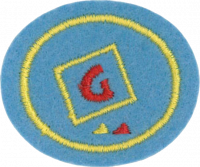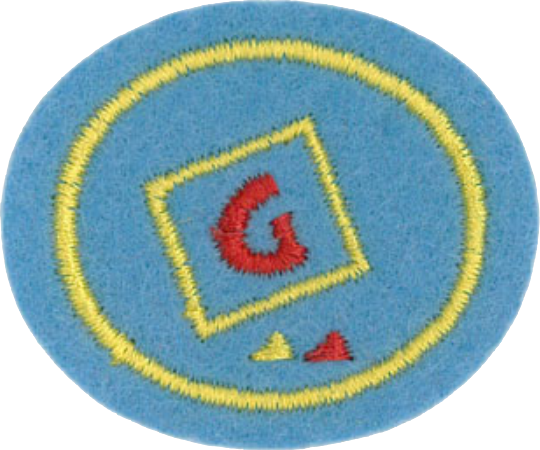Especialidades JA/Trabajos en vidrio/Respuestas
Nivel de destreza
1
Año
1970
Version
05.05.2024
Autoridad de aprobación
Asociación General
1
2
Cuando las personas hablan de vidrio, normalmente se refieren a una sustancia transparente y brillante que se rompe con bastante facilidad. Pueden pensar que el vidrio en las ventanas y el vidrio usado en las gafas son el mismo material. En realidad, no lo son. Hay muchos tipos de vidrio.
Vidrio plano se usa principalmente en ventanas. También se usa en espejos, separadores de habitaciones y algunos tipos de muebles. Todo el vidrio plano está hecho en forma de láminas planas. Pero algunos, como la que se usa en los parabrisas de automóviles, se recalienta y se curva sobre los moldes.
Los contenedores de vidrio se utilizan para envasar alimentos, bebidas, medicamentos, productos químicos y cosméticos. Los frascos y botellas de vidrio se fabrican en una amplia variedad de formas, tamaños y colores. Muchos son para usos comunes, como botellas de refrescos o frascos para enlatar en el hogar. Otros están hechos de fórmulas de vidrio especiales para asegurarse de que no haya contaminación o deterioro del plasma sanguíneo, sueros y sustancias químicas almacenadas en ellos.
El vidrio óptico se usa en lentes, microscopios, telescopios, lentes de cámara y muchos instrumentos para fábricas y laboratorios. Las materias primas deben ser puras para que el vidrio se pueda hacer casi perfecto. El cuidado requerido para producir vidrio óptico lo hace costoso en comparación con otros tipos de vidrio.
La fibra de vidrio consiste en varillas finas pero sólidas de vidrio, cada una de las cuales puede tener menos de una vigésima parte del ancho de un cabello humano. Estas pequeñas fibras de vidrio se pueden empaquetar sin apretar en una masa similar a una lana que puede servir como aislamiento térmico. También se pueden usar como lana o fibras de algodón para hacer hilados de vidrio, cintas, telas y tapetes. La fibra de vidrio tiene muchos otros usos. Se utiliza para aislamiento eléctrico, filtración química y trajes de bomberos. Combinado con plásticos, la fibra de vidrio se puede usar para alas y cuerpos de aviones, carrocerías de automóviles y cascos de barcos. La fibra de vidrio es un material de cortina popular porque es resistente al fuego y lavable.
"Invisible glass" is used principally for coated camera lenses and eyeglasses. The coating is a chemical film that decreases the normal loss of light by reflection. This allows more light to pass through the glass.
Photochromic glass darkens when exposed to ultraviolet rays and clears up when the rays are removed. Photochromic glass is used for windows, sunglasses, and instrument controls.
Photosensitive glass can be exposed to ultraviolet light and to heat so that any pattern or photograph can be reproduced within the body of the glass itself. Because the photographic print then becomes an actual part of the glass, it will last as long as the glass itself.
Photochemical glass is a special composition of photosensitive glass that can be cut by acid. Any design can be reproduced on the glass from a photographic film. Then when the glass is dipped in acid, the exposed areas are eaten away, leaving the design in the glass in three dimensions. By this means, lacelike glass patterns can be made.
Heavy metal fluoride glass is an extremely transparent glass being developed for use in optical fibers that transmit infrared rays. Infrared rays are much like light waves but are invisible to the human eye. In optical fibers, infrared light transmits better over distance than visible light does.
Chalcogenide glass is made up of elements from the chalcogen group, including selenium, sulfur, and tellurium. The glass is transparent to infrared light and is useful as a semiconductor in some electronic devices. Chalcogenide glass fibers are a component of devices used to perform laser surgery.
Sol-Gel glass can be used as a protective coating on certain solar collectors or as an insulating material. It is also used to make short, thick tubes that are drawn into optical fibers. To make Sol-Gel glass, workers dissolve the ingredients in a liquid. They then heat the liquid. The liquid evaporates, leaving behind small particles of glass. Heating these particles fuses (joins) them to form a solid piece of glass. The temperatures involved in Sol-Gel processes are often lower than those needed to make ordinary glass.
3
Vea los pasos en el siguiente requisito. El trabajo en vidrio será más interesante si usa múltiples colores. Claro y blanco son colores también. Considere las tiendas de segunda mano como una fuente de vidrio de color barato.
4
Grouted Mosaic
- Step 1. Decide on a project
- If you have a tabletop that is damaged or needs refinishing, you could cover it in glass mosaic instead. Kitchen tables, coffee tables, end tables, nightstands, and occasional tables all look great with glass mosaic tops. An old windowpane covered in glass mosaic makes a great alternative to stained glass, or you could cover a photo frame in glass mosaic as a smaller project. If you have a bathroom or kitchen floor that needs to be redone, you could cover it cheaply and attractively in tile mosaic.
- Step 2. Finding enough glass or tile for your project
- You can find it in many different places, and for fairly cheap if you are creative about it. If your project calls for clear glass, you can use colored bottles, vases, ashtrays, and other various pieces of clear, colored glass. If you want opaque glass, consider using old dishes and other unwanted glass or porcelain items. You may also be able to find broken tile for little or no money.
- Step 3. Break the glass for your project
- The goal is to create many random-shaped pieces that are large enough to work with. In other words, you don’t want to shatter the glass into bits. Hit each piece of glass with the hammer just once and take a look at the results before hitting it again.Once you have broken all of your glass into pieces, start arranging it on the surface that you are redoing. Of all the steps to making glass mosaics, this step requires the most time and planning. You will need to decide whether to create a picture or a pattern with your glass mosaic, or just arrange the pieces randomly.While you are doing this, keep in mind that the pieces don’t need to fit together perfectly, like a puzzle. In fact, there should be about an eighth of an inch of space between each piece, so that you have room for the grout when you get to that step.
- Step 4. Arrange the colors and the size according to your desires
- Step 5. Glue down each and every piece of glass
- The point of arranging the glass first, and then gluing it down is to make sure you get everything in the right place, so make sure you are done with the previous step before you start on this one.
- Step 6. Fill in all the spaces between the pieces of glass with grout
- Take the grout and be sure to fill every space completely. If the glass is still sharp, you will need to wear rubber dishwashing gloves to protect your hands. Once the spaces are all filled, you can use a damp towel to remove the grout from the tops of the pieces of glass. Once your glass mosaic is finished, be sure to let the glue and grout set for a while before using the piece, particularly if it is a table or a window hanging.
5
Chalcolithic evidence of glass has been found in Hastinapur, India. Some of the texts which mention glass in India are the Shatapatha Brahmana and Vinaya Pitaka. However, the first unmistakable evidence in large quantities, dating from the 3rd century BCE, has been uncovered from the archaeological site in takshashila, ancient India.
By the first century C.E., glass was being used for ornaments and casing in South Asia. Contact with the Greco-Roman world added newer techniques, and Indians artisans mastered several techniques of glass molding, decorating and coloring by the succeeding centuries.[41] The Satavahana period of India also produced short cylinders of composite glass, including those displaying a lemon yellow matrix covered with green glass.
Islamic world
The Arab poet al-Buhturi (820–897) described the clarity of such glass, "Its color hides the glass as if it is standing in it without a container."
Stained glass was also first produced by Muslim architects in Southwest Asia using colored glass rather than stone. In the 8th century, the Arab chemist Jabir ibn Hayyan (Geber) scientifically described 46 original recipes for producing colored glass in Kitab al-Durra al-Maknuna (The Book of the Hidden Pearl), in addition to 12 recipes inserted by al-Marrakishi in a later edition of the book.
By the 11th century, clear glass mirrors were being produced in Islamic Spain.
Medieval Europe
Glass objects from the 7th and 8th centuries have been found on the island of Torcello near Venice. These form an important link between Roman times and the later importance of that city in the production of the material. Around 1000 AD, an important technical breakthrough was made in Northern Europe when soda glass, produced from white pebbles and burnt vegetation was replaced by glass made from a much more readily available material: potash obtained from wood ashes. From this point on, northern glass differed significantly from that made in the Mediterranean area, where soda remained in common use.
Until the 12th century, stained glass – glass to which metallic or other impurities had been added for coloring – was not widely used.
The 11th century saw the emergence in Germany of new ways of making sheet glass by blowing spheres. The spheres were swung out to form cylinders and then cut while still hot, after which the sheets were flattened. This technique was perfected in 13th century Venice.
The Crown glass process was used up to the mid-19th century. In this process, the glassblower would spin approximately 9 pounds (4 kg) of molten glass at the end of a rod until it flattened into a disk approximately 5 feet (1.5 m) in diameter. The disk would then be cut into panes.
Murano glassmaking
The center for glassmaking from the 14th century was the island of Murano, which developed many new techniques and became the center of a lucrative export trade in dinnerware, mirrors, and other luxury items. What made Venetian Murano glass significantly different was that the local quartz pebbles were almost pure silica, and were ground into a fine clear sand that was combined with soda ash obtained from the Levant, for which the Venetians held the sole monopoly. The clearest and finest glass is tinted in two ways: firstly, a small or large amount of a natural coloring agent is ground and melted with the glass. Many of these coloring agents still exist today; for a list of coloring agents, see below. Black glass was called obsidianus after obsidian stone. A second method is apparently to produce a black glass which, when held to the light, will show the true color that this glass will give to another glass when used as a dye.
The Venetian ability to produce this superior form of glass resulted in a trade advantage over other glass producing lands. Murano’s reputation as a center for glassmaking was born when the Venetian Republic, fearing fire might burn down the city’s mostly wood buildings, ordered glassmakers to move their foundries to Murano in 1291. Murano's glassmakers were soon the island’s most prominent citizens. Glassmakers were not allowed to leave the Republic. Many took a risk and set up glass furnaces in surrounding cities and as far afield as England and the Netherlands.


